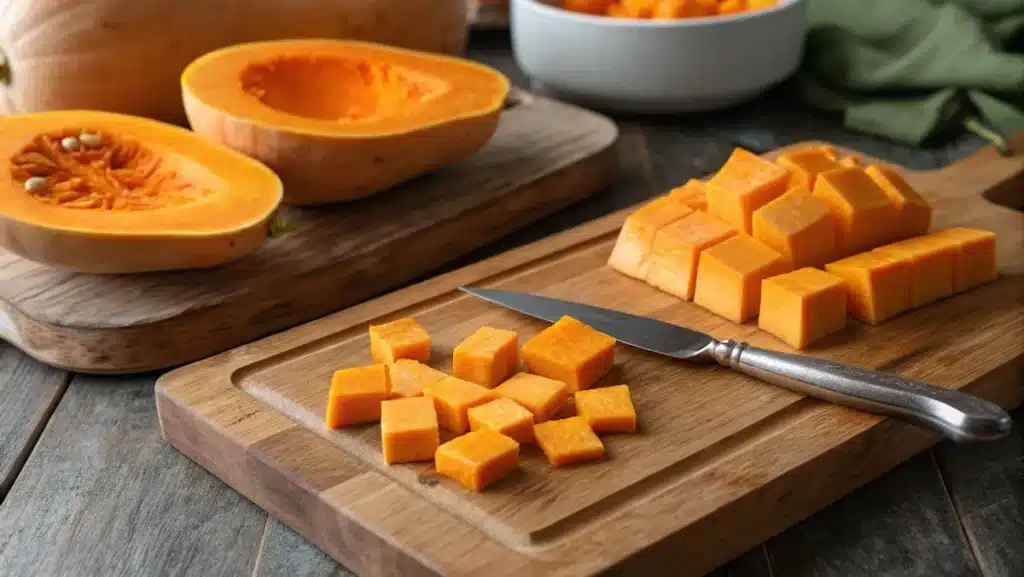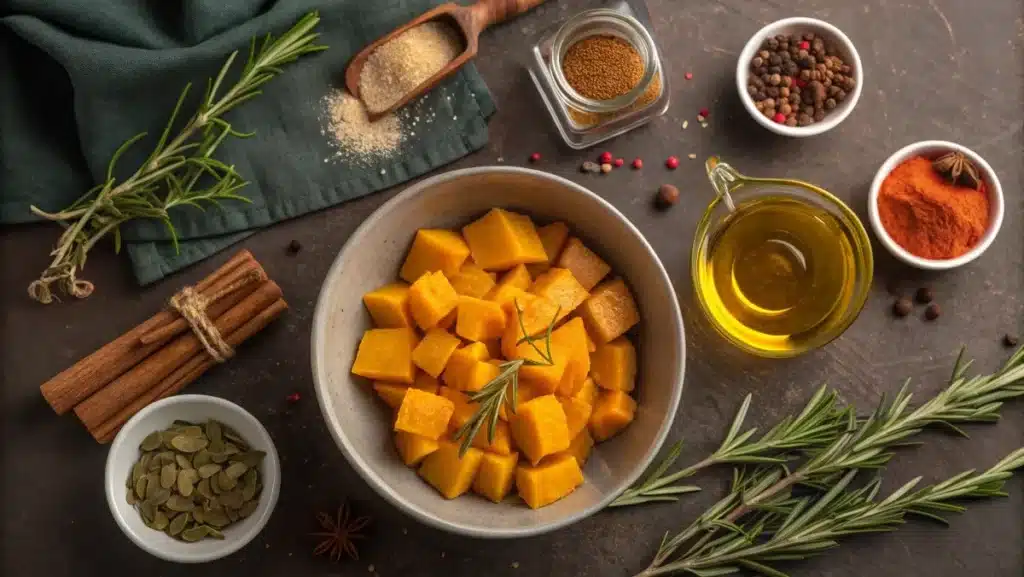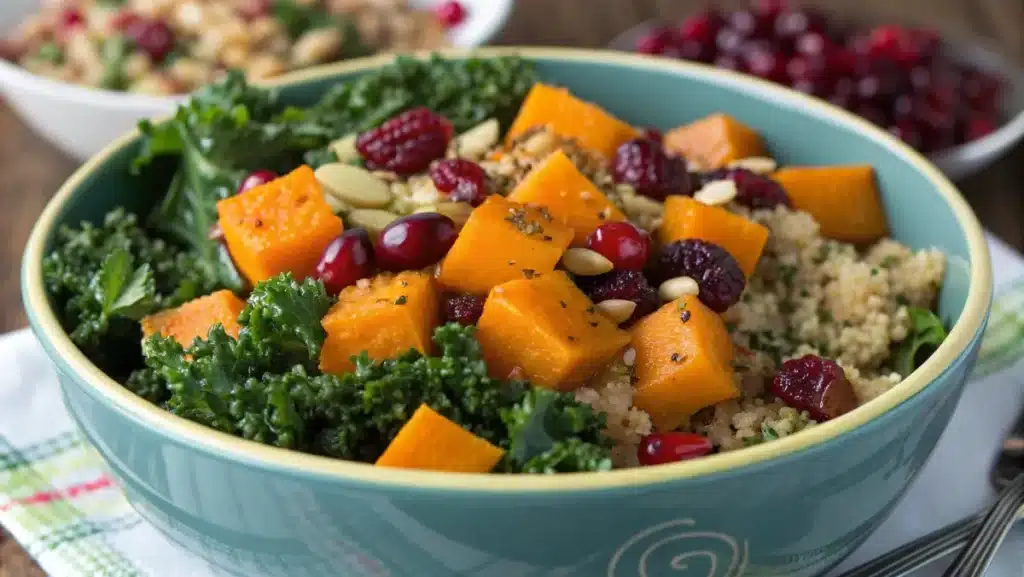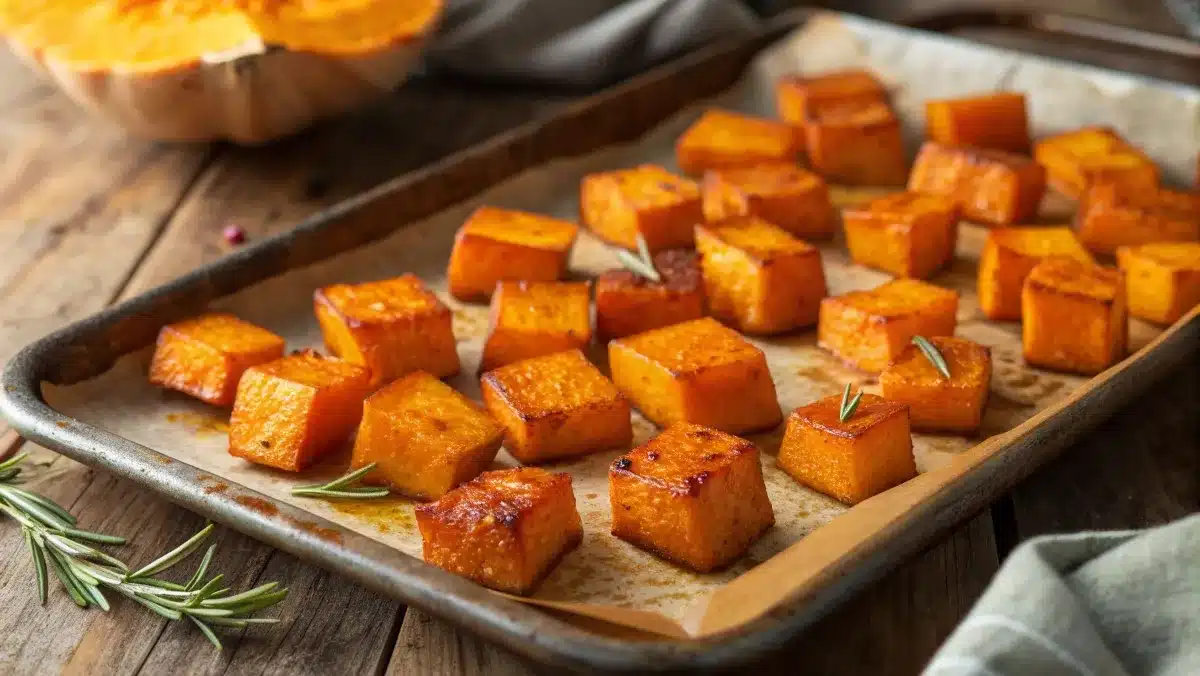Roasted Butternut Squash Recipe: The Ultimate Guide for Perfect Flavor
When the weather turns crisp, few dishes feel as cozy and comforting as a roasted butternut squash recipe. Its naturally sweet, nutty flavor pairs beautifully with both savory herbs and warming spices, making it a staple on fall and winter dinner tables across the USA. Whether you’re preparing a holiday feast or looking for a simple weeknight side, roasting butternut squash brings out a caramelized richness that’s hard to beat.
But roasted butternut squash isn’t just about taste—it’s also packed with vitamins, fiber, and antioxidants, making it a healthy choice that fits into almost any eating plan. And the best part? This versatile veggie works beautifully in soups, salads, casseroles, or even as a stand-alone side dish. If you enjoy exploring seasonal comfort foods, don’t miss our Paula Deen Sweet Potato Casserole, which pairs wonderfully with roasted squash on a holiday table.
THE BEST PROXY EVER : www.anonymous-proxies.net
Table of Contents
Why Roasted Butternut Squash Is a Fall Favorite
The Appeal of Roasted Butternut Squash
Butternut squash has a natural sweetness that intensifies in the oven. Roasting caramelizes its sugars, producing a soft, golden texture with slightly crisp edges. That balance of tender and roasted makes it a crowd-pleaser, even for those who don’t usually love vegetables.
Nutritional Benefits You Can’t Ignore
A roasted butternut squash recipe isn’t just about flavor—it’s also highly nutritious. Butternut squash is loaded with:
- Vitamin A for eye health
- Vitamin C to support immunity
- Potassium for heart health
- Dietary fiber for digestion
This makes roasted squash a wholesome addition to balanced meals.
What This Guide Will Cover
In the next sections, we’ll dive into:
- How to choose a fresh, ripe squash at the market
- Whether or not you need to peel it before roasting
- Best roasting temperatures and seasoning combos
- Expert tips from chefs, including Gordon Ramsay
- FAQs that clear up common doubts
By following along, you’ll have all the knowledge you need to master a roasted butternut squash recipe that works every time.
Choosing the Best Butternut Squash for Roasting
How to Pick a Ripe and Fresh Butternut Squash
The success of any roasted butternut squash recipe begins at the market. A ripe squash should have:
- Even beige color without green patches (a sign it’s not fully mature).
- Firm skin with no soft spots, which may indicate rot.
- Heaviness for its size, meaning it’s packed with dense, flavorful flesh.
A dull matte finish is ideal. A shiny surface often means the squash was picked too early.
Signs of Bad or Spoiled Squash
Avoid squashes with deep cuts, mold, or soft, watery spots. A musty smell is also a clear indicator it’s gone bad. When in doubt, tap it—fresh squash should sound solid, not hollow.
Storing Squash Before Roasting
If you’re not ready to roast right away, store your squash in a cool, dry place. Whole butternut squash can last up to one month on the counter. Once cut, wrap it tightly and refrigerate—it’ll stay fresh for about 4–5 days. For longer storage, cube it and freeze; roasted squash from frozen still tastes delicious in soups and casseroles.
Looking for inspiration? Try pairing your roasted squash with cheesy comfort dishes like our Funeral Potatoes Recipe. The savory richness balances beautifully with the natural sweetness of butternut squash.
Prepping Butternut Squash for Roasting

Do You Need to Peel Butternut Squash Before Roasting?
One of the most common questions about making a roasted butternut squash recipe is whether or not to peel it. The truth is, you don’t always have to. If you’re cubing squash for a side dish, peeling makes for a smoother bite. But if you’re roasting it in halves, the skin helps hold the shape and can easily be scooped out after cooking. While butternut squash skin is technically edible, it tends to be tough and chewy, so most people prefer removing it before serving.
Cutting and Deseeding Techniques Safely
Butternut squash is notoriously hard to cut, so safety is key. Here’s a simple method:
- Slice off both ends for stability.
- Cut the squash in half crosswise where the neck meets the bulb.
- Stand each half upright and slice downward carefully.
- Use a sturdy spoon to scoop out the seeds.
Pro Tip: You can roast the seeds just like pumpkin seeds for a crunchy, nutrient-packed snack. Don’t miss our Spaghetti Squash Seeds Guide if you’d like to learn how to make the most of squash seeds.
Tips for Reducing Prep Time
If chopping a whole squash feels intimidating, many grocery stores sell pre-cut butternut squash cubes. While slightly more expensive, they save time and effort. You can also soften a whole squash by microwaving it for 2–3 minutes before cutting—this loosens the skin and makes slicing much easier.
Roasted Butternut Squash Recipe Basics
Key Ingredients for the Perfect Roasted Squash
To make a simple yet flavorful roasted butternut squash recipe, you’ll only need a handful of ingredients:
- 1 medium butternut squash
- 2–3 tablespoons olive oil (or avocado oil for a nuttier flavor)
- 1 teaspoon salt
- ½ teaspoon black pepper
- Optional: garlic powder, smoked paprika, or cinnamon for extra flavor
This minimalist approach lets the natural sweetness of the squash shine through.
What Temperature to Roast Butternut Squash for Best Results
Temperature plays a huge role in getting that golden, caramelized finish. The sweet spot is 400°F (200°C). At this temperature, the squash softens inside while the edges crisp perfectly. If you roast at 350°F, the squash will cook, but it may lack the caramelized depth. Higher heat, like 425°F, works too but requires closer monitoring to avoid burning.
Cooking Time and Doneness Checks
The cooking time depends on how you prepare the squash:
- Cubed squash: Roast for 25–30 minutes, flipping halfway.
- Halved squash: Roast cut-side down for 40–50 minutes.
- Whole squash: Roast for about 60–75 minutes, piercing with a knife to check tenderness.
Your squash is done when it’s fork-tender, lightly golden, and smells slightly sweet.
If you love easy, oven-baked recipes, check out our comforting Mexican Street Corn Dip with Cream Cheese — it’s another crowd-pleaser that roasts beautifully.
Seasoning Ideas for Roasted Butternut Squash

What Seasoning Is Good on Roasted Butternut Squash?
One of the joys of a roasted butternut squash recipe is how versatile it is with seasoning. The natural sweetness pairs equally well with savory herbs or warming spices. Some tried-and-true choices include:
- Savory: rosemary, thyme, sage, garlic powder, onion powder
- Sweet: cinnamon, nutmeg, brown sugar, maple syrup
- Spicy: cayenne pepper, chili powder, smoked paprika
This makes roasted squash adaptable for both everyday meals and holiday spreads.
Classic Flavor Pairings
If you want to highlight butternut squash’s earthy sweetness, try these combinations:
- Olive oil + sea salt + cracked black pepper (simple and classic)
- Maple syrup + cinnamon + nutmeg (a cozy fall twist)
- Garlic + rosemary + Parmesan cheese (savory and indulgent)
Each version enhances the roasted flavors in a unique way, letting you tailor the recipe to your taste.
How Chefs Like Gordon Ramsay Season Butternut Squash
Gordon Ramsay is known for using minimal but bold flavors. His style often includes olive oil, sea salt, cracked black pepper, and fresh herbs like thyme or sage. He sometimes finishes roasted squash with a drizzle of balsamic reduction for a touch of acidity that balances the sweetness.
Looking for inspiration? Try pairing your seasoned squash with one of our Gluten-Free Side Dishes for a wholesome, allergy-friendly spread.
Different Roasting Methods for Butternut Squash
Roasting Butternut Squash in Cubes
Cubing is the most popular method for a roasted butternut squash recipe because it creates bite-sized, caramelized pieces perfect for side dishes or tossing into salads. To do this, peel and cube the squash into 1-inch chunks. Coat evenly with olive oil and seasonings, spread on a baking sheet, and roast at 400°F for 25–30 minutes, flipping halfway for even browning.
Roasting Butternut Squash Halves
If you’d rather let the oven do more of the work, roasting squash halves is a great option. Cut the squash lengthwise, scoop out the seeds, and place it cut-side down on a lined baking sheet. This method requires about 40–50 minutes at 400°F. The flesh becomes tender, and you can scoop it out easily for soups, mashes, or casseroles.
Can You Roast a Butternut Squash Whole?
Yes, you can roast the squash whole if you’d prefer to skip peeling and chopping. Simply pierce the skin several times with a fork to allow steam to escape, then roast at 375–400°F for about 60–75 minutes. Once cooled slightly, slice it open, remove the seeds, and scoop out the soft flesh. This method is less hands-on and safer if you’re not comfortable cutting raw squash.
Skin: Edible or Not?
While the skin of butternut squash is technically edible, it tends to be tough. Roasting does soften it slightly, but most people prefer to peel it off or scoop out the flesh. Some squash varieties like delicata have tender skins that are great to eat, but butternut is best enjoyed without.
Creative Ways to Serve Roasted Butternut Squash
As a Simple Side Dish
Sometimes the best roasted butternut squash recipe is the simplest one—seasoned cubes served alongside chicken, turkey, or fish. The caramelized edges add sweetness that balances savory mains, making it an excellent holiday or weeknight side.
In Soups and Purees
Roasted squash blends into a silky, naturally sweet base for soups. By roasting first, you deepen the flavor before blending with broth, cream, or coconut milk. Pureed squash also makes a smooth base for sauces and baby food.
In Salads and Bowls
Adding roasted butternut squash cubes to a salad instantly makes it more filling and colorful. Toss with kale, quinoa, dried cranberries, and goat cheese for a balanced dish. For grain bowls, pair squash with chickpeas, wild rice, and tahini dressing for a hearty vegetarian meal.

In Casseroles and Pasta
Roasted butternut squash brings a creamy richness to baked pasta, lasagna, or cheesy casseroles. It’s also delicious stirred into risotto or gnocchi dishes. For more comfort-food pairings, check out our Classic Tuna Noodle Casserole.
As a Sweet Treat
Yes, you can even turn roasted butternut squash into dessert. Add cinnamon, brown sugar, and butter to roasted halves, then serve warm with vanilla ice cream. Its natural sweetness makes it a healthier alternative to pumpkin-based desserts.
Expert Tips and Tricks for Perfect Roasted Butternut Squash
Achieving the Perfect Texture
For squash that’s crispy on the outside yet tender inside, make sure you:
- Spread cubes in a single layer on the baking sheet (crowding causes steaming instead of roasting).
- Use parchment paper or a lightly oiled sheet to prevent sticking.
- Flip cubes halfway through roasting for even caramelization.
Common Mistakes to Avoid
Many home cooks make small errors that change the outcome of their roasted butternut squash recipe. Avoid these pitfalls:
- Undercooking: Squash should be fork-tender, not hard or chewy.
- Using too little oil: Oil helps caramelize the edges and prevents dryness.
- Skipping seasoning: A sprinkle of salt enhances the natural sweetness.
Storage and Reheating Tips
Leftovers keep well if stored correctly. Place roasted squash in an airtight container and refrigerate for up to 5 days. To reheat, spread on a baking sheet and warm at 350°F for 10 minutes to restore crispness. Avoid microwaving if you want to keep the texture intact.
Freezing for Future Use
Roasted butternut squash freezes beautifully. Spread cooled cubes on a baking sheet, freeze individually, then transfer to freezer bags. They’ll keep for up to 3 months and are perfect for quick soups or side dishes.
Don’t miss our Spaghetti Squash guide for more handy freezing tips that also apply to butternut squash.
Conclusion
Roasting butternut squash is one of the easiest ways to transform this humble vegetable into a versatile dish that fits any table. From a simple side dish to soups, salads, casseroles, or even desserts, this roasted butternut squash recipe delivers warmth, sweetness, and comfort in every bite. Whether you cube, halve, or roast it whole, the key lies in proper seasoning, oven temperature, and a little patience. With these tips, tricks, and creative serving ideas, you’ll never run out of ways to enjoy this seasonal favorite.
For more cozy fall flavors, don’t miss our Pot Roast Seasoning Recipe — another classic comfort dish.
FAQs
How does Gordon Ramsay cook butternut squash?
Gordon Ramsay keeps it simple. He typically seasons butternut squash with olive oil, salt, and pepper, then roasts it at a high heat (around 400°F) to enhance the natural sweetness. Fresh herbs like thyme or sage and a drizzle of balsamic reduction are often added for depth.
What temperature to roast butternut squash?
The best temperature for a roasted butternut squash recipe is 400°F (200°C). This ensures tender flesh with caramelized edges. You can adjust slightly between 375–425°F depending on your oven and preferred texture.
What seasoning is good on roasted butternut squash?
The squash pairs beautifully with both savory and sweet spices. Garlic, rosemary, thyme, and sage bring out earthy notes, while cinnamon, nutmeg, and maple syrup highlight its natural sweetness. Smoked paprika or cayenne adds a nice kick if you like spice.
Do I need to peel butternut squash before I roast it?
Not always. If you roast halves or whole squash, you can leave the peel on and scoop out the flesh after cooking. For cubed squash, peeling before roasting creates a smoother, more enjoyable texture.
Can you roast a butternut squash whole?
Yes. Simply pierce the skin with a fork to allow steam to escape, then roast at 375–400°F for 60–75 minutes. Once done, cut it open, scoop out the seeds, and enjoy the tender flesh.
Which squash skin is not edible?
Most winter squash skins, like butternut, acorn, and spaghetti squash, are technically edible but can be tough. Varieties like delicata squash have thin, tender skins that are pleasant to eat. In general, thicker-skinned varieties are best peeled or scooped.

